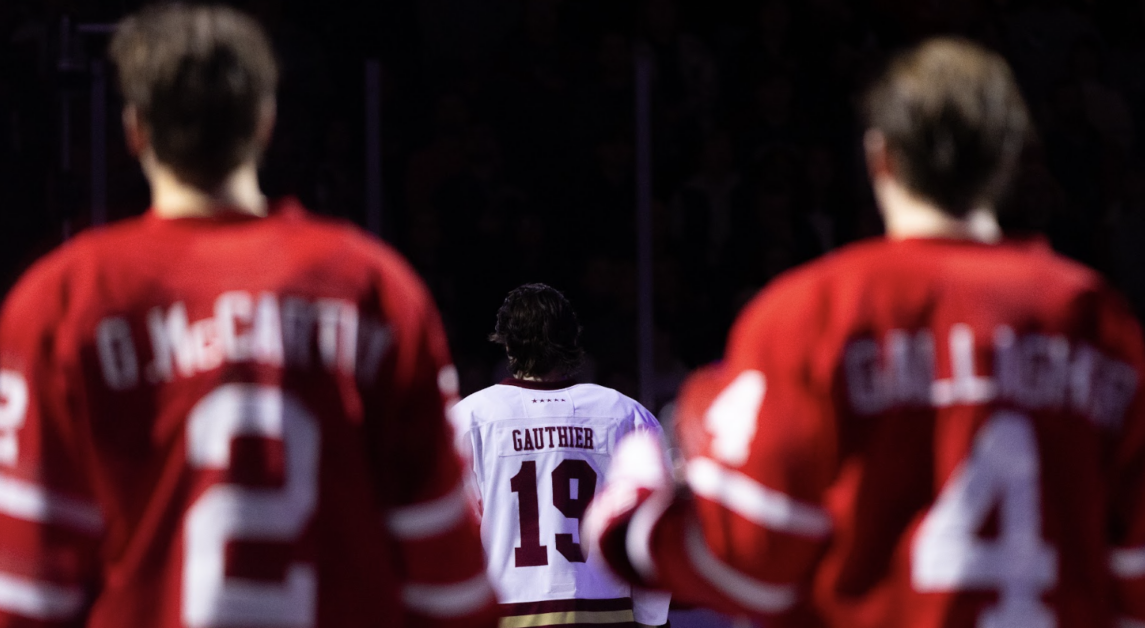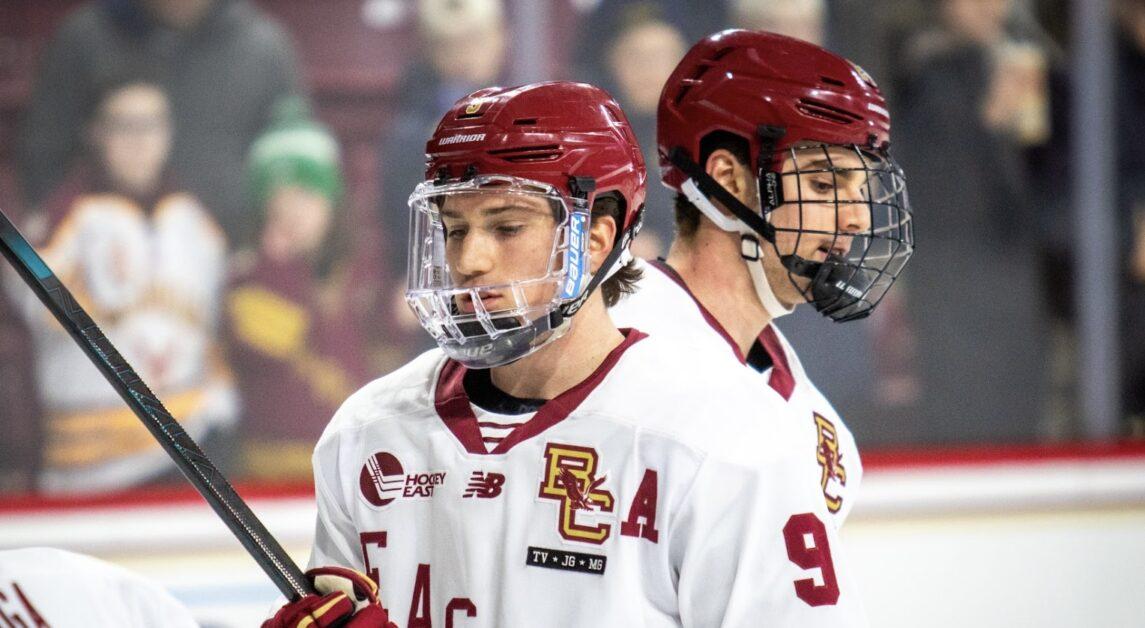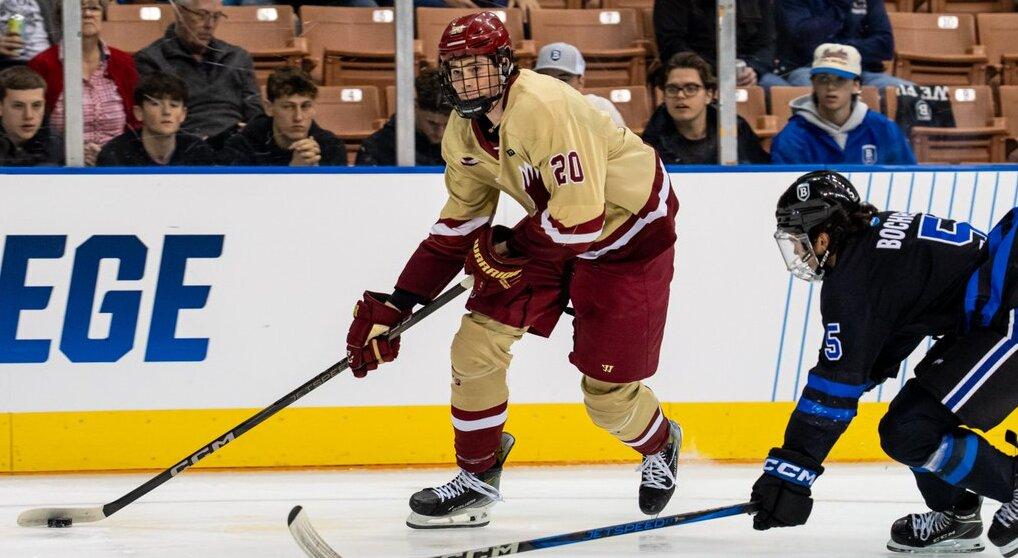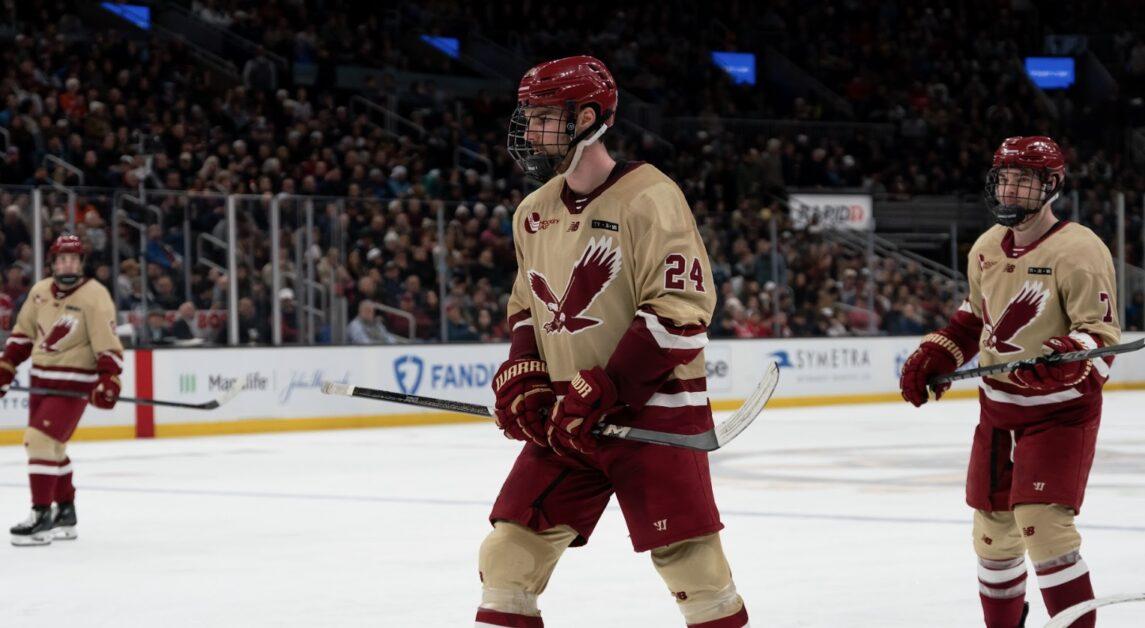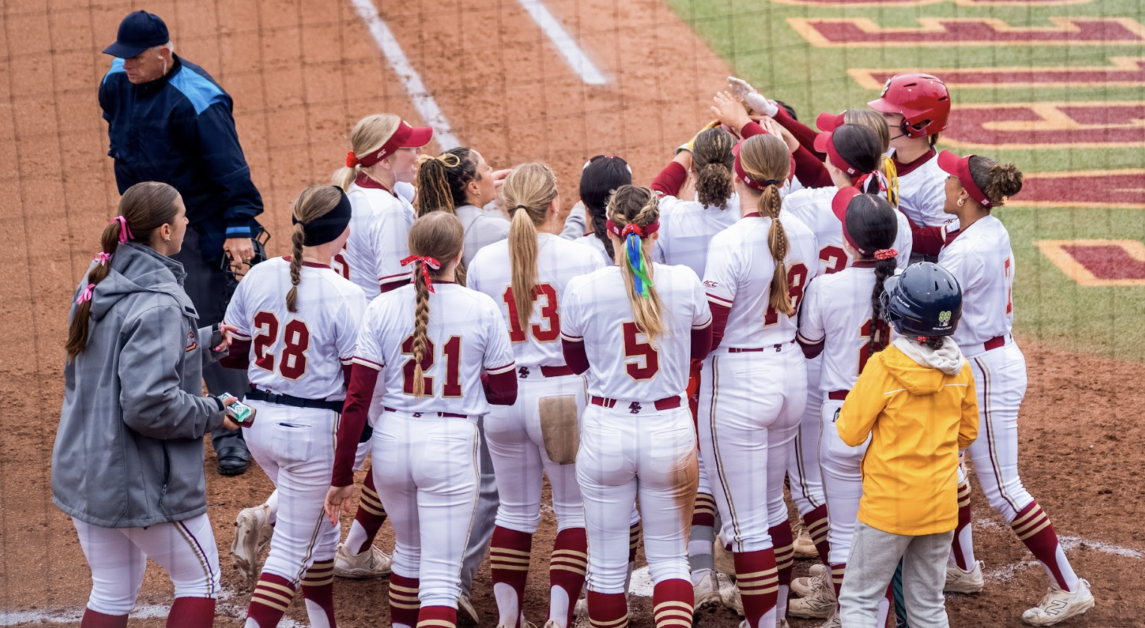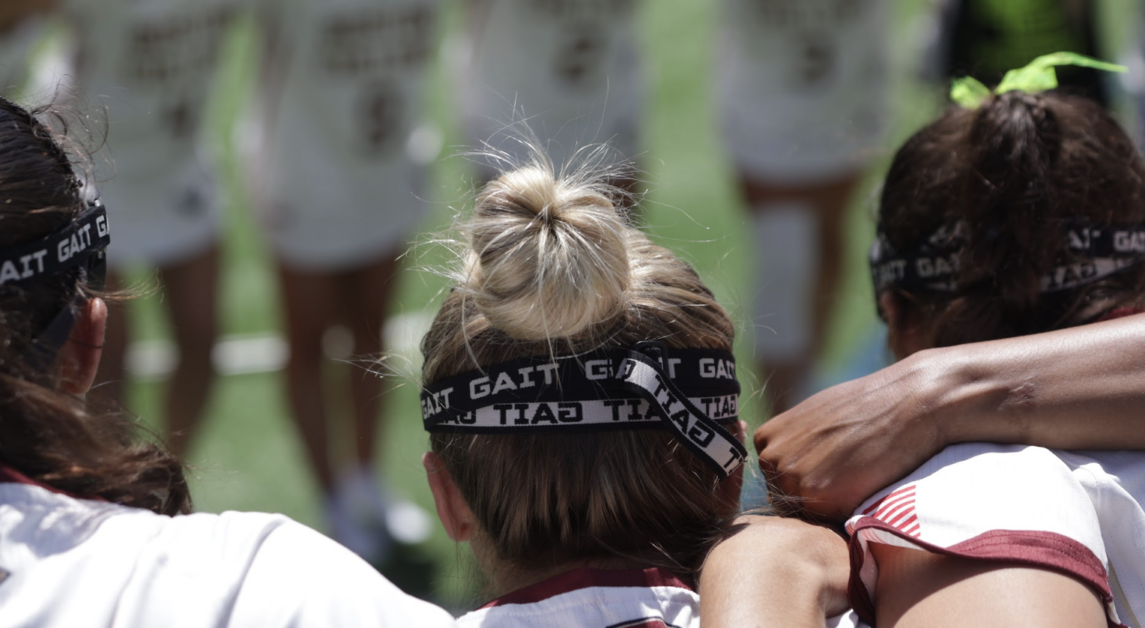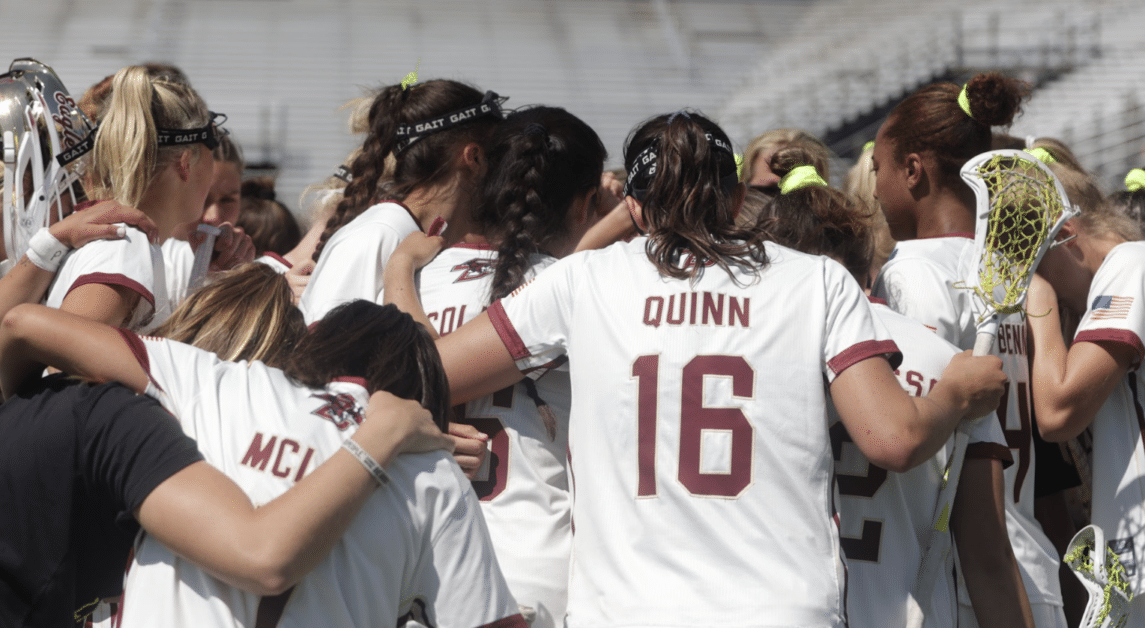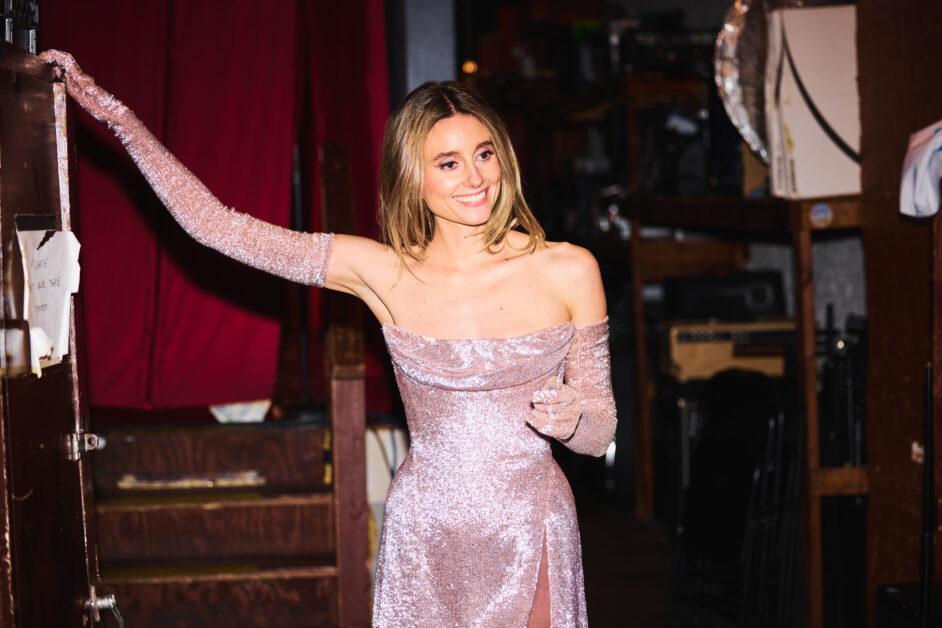Noah Hanifin shouldn’t be here. Kids his age roaming college campuses this time of year are on tours, embarrassed by their parents’ questions and worried about their last round of SATs on Saturday. But if Hanifin, Boston College men’s hockey’s 17-year-old freshman defenseman, is worried about anything Friday night, it’ll be about stopping a UMass Lowell squad featuring players up to seven years his senior.
Hanifin is used to being an exception. The Norwood, Mass. native made the varsity team at his high school, St. Sebastian’s, in eighth grade and left the school after his sophomore year to play for the U-17 U.S. National Development Team in Ann Arbor, Michigan. A few months after his 17th birthday, he got called up to play in the U-18 World Championships in April. Now he’s a 1997 birthday in a freshman class of ’95 and ’96 birthdays.
Exceptions cease to be exceptional if they keep happening. In fact, Hanifin isn’t that special amongst his peers. An atypical, accelerated path is standard operating procedure for a prospect of Hanifin’s caliber. NHL.com draft guru Mike Morreale said that Hanifin, a consensus top-five projected pick in June’s loaded 2015 draft, possesses the ceiling of a possible future Norris Trophy candidate—the trophy given to the best defenseman in the NHL.
Jack Eichel, a 17-year-old freshman at Boston University and another projected top-five pick, spent last season with the USNDT. BC sophomore goalie Thatcher Demko was 17 when last season began after spending a season out in Michigan, too.
“I talk to Thatcher a lot about it,” Hanifin said. “You gotta play with confidence. Thatcher tells me you gotta know [that] you’re here for a reason. Just like last year, Thatcher was an under-ager and he was a starting goalie. You just gotta be confident and know [that] you’re here for a reason.”
Hanifin is here to produce. From practice and exhibition observations, Hanifin will be partnered with sophomore Steven Santini to start the season. Santini, the Eagles’ best defensive zone player, often matches up against opponents’ top scoring lines. Those tough assignments, along with the regular power play time that Hanifin received in the exhibition versus University of New Brunswick, indicate the trust and expectations placed in one of the most premier recruits York has landed.
At 6-foot-3, 205 pounds, Hanifin is noticeably beefed-up from his St. Sebastian’s days. He thinks he’s ready, but he wouldn’t have been if he didn’t spend the year in Michigan. “Definitely not,” Hanfiin said. “Skill-wise, I just developed as a whole, playing with some of the best players in the country every day, going to battle with them every day—that just helps your skills naturally. But I think I made [a bigger jump] off the ice, in the gym. In the development program, we lift four days a week—it’s a lot more intense than a college program. We just do so much training out there. It’s really hard, but I think I got a lot stronger.”
While preparing to shut down Eichel, Maine’s Devin Shore, and other frontline forwards in Hockey East, Hanifin doesn’t have much time to think about what he could be doing in an alternate, quieter life. But even a fast-tracked prodigy catches himself pondering what life would be like as a normal senior in high school.
“I do think about that,” he said. “I miss [St. Sebastian’s] a lot. But hockey’s one of those sports where you gotta make sacrifices. It’s not like football or basketball where you can just play high school and college. If you really want to play hockey for a living, then you gotta go places early, move away, stuff like that. I think about it sometimes, but it’s nice that I’m not far away.”
So far, those sacrifices have paid off in full, and Hanifin can accelerate that progress this year at Conte Forum. In just over a month since he arrived on campus, the youngest player in program history understands why York’s program is in contention annually.
“The coaches have really positive expectations,” Hanifin said. “Even though haven’t had a lot of practice, coaches expect players to be ready to go every single day. You have to be prepared for the season, even though we don’t get a lot of time to practice as a team, so it’s pretty incredible how well prepared the players are, how ready we are for the season and we haven’t had much time to work together. So it’s pretty cool, the training, everything’s very serious. It’s a school where they want to win national championships, and that’s driven into all the players’ heads: you’re here and you’re expected to win championships.”
The preferred style of those coaches meshes with their only freshman defenseman. Hanifin’s skating ability is the most impressive thing about his game, and it would be even if he wasn’t 6-foot-3 and 205 pounds. He can chase down smaller, quicker forwards and also lead the offensive rush. In York’s fast-paced system, all players need to be capable of skating and pushing the play, and they won’t waste a player that loves to, and can do, just that from the back end.
“[Hanifin] is a very smart skater,” Morreale said in an email. “The thing I like is that he has that offensive upside ability to push the play, but does a good job at understanding how to control it and when to let the play go away from him and move it up to whoever is open.”
“Especially being an offensive defenseman, [associate head] coach [Greg] Brown gives me a lot of confidence to play my game,” Hanifin said. “They don’t play set back at all, they want defensemen up in the play, they want to play with the puck, they don’t want to be playing defense at all. It’s nice being part of a team that likes to thrive off the offensive game. I like to play at a fast pace.”
Brown, a former BC, minor league and NHL blue liner who liked to jump up into the play himself and whom now coaches the BC defensemen, is already a catalyst to his new pupil’s development. In an observed practice, Brown was conducting an offensive zone faceoff drill when the puck was won back to Hanifin at the point. Hanifin didn’t execute his assignment, and Brown stopped the drill to get in Hanifin’s ear.
“We just played similar styles. When he played he was an offensive defenseman, so his knowledge of little habits of the game from a defenseman standpoint is so good, so important, so I listen to what he has to say,” Hanifin said. “I haven’t been here a long time and I’ve already learned a lot from him. Little keys that can help me when I’m playing against older guys and stronger guys and stuff, more physical guys. He just really helps me a lot because we played a similar type game.”
Hanifin is aware and composed for a 17-year-old, far from surprising for a figure known on the continental hockey landscape for a disproportionate fraction of his life.
While effusive in his praise of his coaches and teammates, he knows what needs to be improved upon if he wants to ascend at a continuous rate. The margins in all aspects of the game shrink as the level of competition rises, and Hanifin is focused on making sure he can get his shot through from the point as the bodies gets bigger and the shooting lanes shrink. And he’s not just thinking about Hockey East or the Beanpot.
“My shot is something I really want to work on this year, because as your progress in the levels of hockey, it’s really important to work on your shot, especially as a defenseman, getting shots from the blue line, it gets harder and harder,” Hanifin explained. “I come out here usually Tuesday and Thursday mornings and skate with Coach Brown, and I try to work on my shot a lot because it’s so vital at next levels.”
The draft looms. Every matchup with Eichel will be scrutinized from Boston to Saskatoon. Bob McKenzie, renowned TSN reporter and the Walter Cronkite of hockey, recently published a feature titled Hockey Fans Will Soon Know the Name Hanifin, which means that they probably know it. If they don’t, they have eight months to find out.
But the 17-year-old behind the name isn’t worried anything beyond the end of practice, let alone Lowell. After another failed turn in Brown’s drill, visibly frustrated with himself and Brown’s chirping, he finally fired the puck off the back end boards behind the goalie, intentionally wide, where he was supposed to put it. The drill was done, and practice was soon over, but not before a scrimmage. Hanifin’s team lost, and each member had to skate gassers as punishment—no exceptions.
Featured Image by Emily Fahey / Heights Editor

